By Kirk Ross
Staff Writer
Early this week, just off the gravel road that leads from what one might call downtown Haywood, Jim Massey was chatting with Miz Thang, an artist from Hawkinsville, Georgia who’s been touring the countryside “drivin’ and lookin’.â€
Naturally, a stop at Massey’s Holly Hill Daylily and Crinum Farm was on the list. Massey, a retired botany professor and the longtime director of the University of North Carolina Herbarium, has built an impressive array of daylilies over the years and, in the three or so cultivated acres that they dominate, has more than 1,700 varieties — each marked and cataloged and, usually, with a story attached. He also keeps watch over more than three dozen varieties of crinums and an assortment of Verbenas, Red Hot Pokers and other perennials.
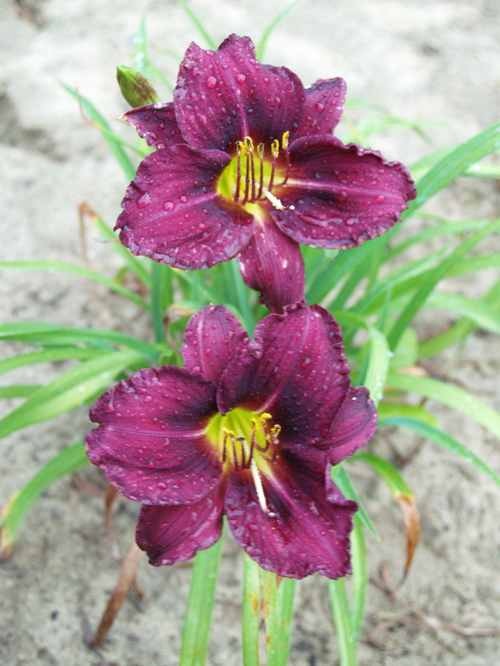
The farm also is home to a splendid collection of rare and unusual poultry — Domaniques, Ameraucana, Silver Seabright and others — either free-ranging or scratching about in their pens.
But for Miz Thang and hundreds of other folk and outsider artists, the exuberant botanist from Texas is known more for his passion for their works and, more recently, as curator of the Historic Haywood Folk Art Museum, which opened for the first time last year for the early-June to late-July daylily season and is now open to visitors to the farm each weekend through July 22.
This weekend, the farm will host a Potluck in the Pasture fundraiser for ChathamArts.
Walking in the place, the first thing that strikes you is, well, everything. It’s not a place of subtlety, at least at first. Colors and patterns leap off the walls. Angels are everywhere.
There are, of course, things you’d expect around here from such a museum — prints by the late Rev. Howard Finster, patron saint of the folk art universe; works by regulars at the annual folk art show at Fearrington; and Bynum’s own Clyde Jones (in this case, belted galloways frolicking).
But there’s a lot more to take in — from memory jugs imbedded with mementos and everyday objects like poker chips and marbles to Jimmie Lee Sudduth’s plywood paintings done with mud and crushed flowers and plants. There are whirligigs by Vollis Simpson and R.A. Miller; large, striking portraits — including one done in Finster-like fashion of Massey himself— by Big Chief; and painted saws and other works by Eric “Preacherman†Pace.
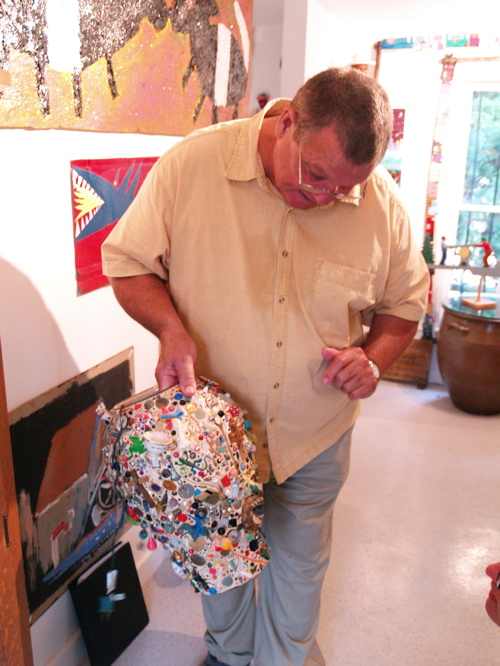
“Strangely enough, I started to collect this off of EBay,†Massey said, looking around the museum. “That opened the door to meeting artists. Of course, I didn’t buy a Clyde Jones off of EBay.â€
As you might expect from a man with 1,700 varieties of daylilies and who collected, catalogued and curated at one of the largest herbariums in the South, once he got into it, the art collection grew rapidly.
It wasn’t until he moved a small, dilapidated post office to his farm that the collection began to turn to museum.
“I’ve been living with this stuff for years. Most of it was sort of stacked up.â€
Massey has had a long fascination with old country stores and small, architecturally unique buildings like the old post office from the nearby hamlet of Merry Oaks. It was just about demolished, he said, when he bought it and moved it to his farm to house the works he’d acquired.
“We were going to try to restore it, but the more we worked on it the more [we realized] it was just not possible,†he said. So, after fixing up the roof and ceiling and paneling over the old walls, the Haywood Museum was born. It opened for the first time during last year’s daylily season.
A tour through the place with the museum director includes a stream of anecdotes about the artists or the pieces and a primer on the styles on display.
The difference between an “outsider†artist and a folk artist, Massey explained, is that an outsider artist may have actual training in art.
Pointing to an ornately framed work that until you look closely you might not realize is actually ringed with painted plastic army men, Massey says, “Somebody might have taught him how to paint, but nobody taught him to do that.â€
And while some people can walk past a Finster or a saw by Pace and barely give it the once-over, those who take a moment to delve into the details are richly rewarded. Massey notes the details in a crosscut saw by Pace. “This was one of my saws.†It is dotted with references to Massey, daylilies and folk art.
Outside the museum, beyond the gaze of the towering Elvis by western Kentucky artists C.M. and Grace Kelly Laster, Massey’s eye for outsider art has left its marks in the fields and around the gardens. Two tall plywood ladies and a tin soldier stand watch over the daylilies, old sinks and bathtubs host water plants, a fence of bicycles is under construction and garden globes abound.
It is not far, as the crow flies, to Haywood and the daylily farm. Once you’re there, though, the journey has just started.
Holly Hill Daylily Farm is open weekends through July 22 from 7:30 a.m. to 5:30 p.m. rain or shine.
You can visit the farm online at www.hollyhilldaylilies.com.
To get there from Carrboro, take U.S. 15-501 through Pittsboro, then left on Moncure-Pittsboro Rd (look for the sign for the Jordan Lake dam) to the intersection with Old U.S. 1. Take a left on Old U.S. 1, turn right across from Liberty Chapel Church (Haywood Road) and follow the daylily signs.

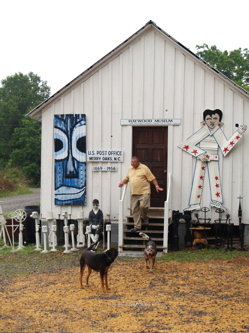
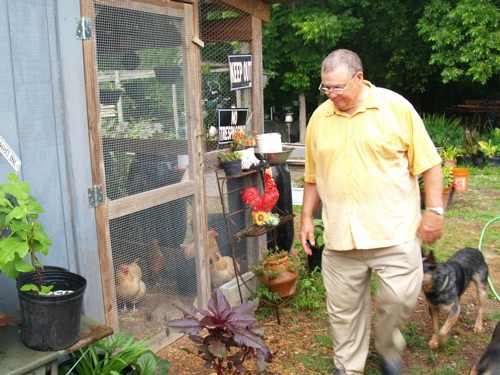
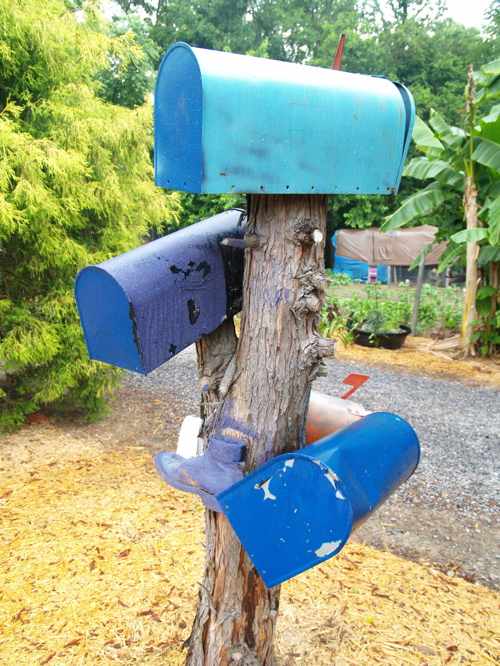
What a great article about Jim Massey and his daylily farm and museum. It’s a wonderful place to find daylilies for your own garden or for a gift for a gardening friend. In the middle of the daylily season when all 3 acres are in full bloom there is nothing like it! I have flower beds full of Jim’s daylilies which thrive and give us such a colorful spring and summer. I would recommend a visit for anyone who is interested in a hardy perennial that will be at home most anywhere.
Excellent article. We’ve been there and think it’s a great slice of life, you’ve captured it perfectly.
What an interesting article about Massey and his daylily farm. Jim and I grew up together in a small town in Texas and it has been nearly 50 years since we have seen each other! We all hope he will be back for our reunion in October ’07. We are very proud of his success and proud to claim him as one of the “greatest of the great.”
Hi, I am not able to find the six page article in Southern Garden. I had all of them available to me on my trip except a few, and I looked and looked. Will you tell me the month? I have two good friends looking into organic gardening as a profession and I want them to see your stuff.
Take care, Gaylee